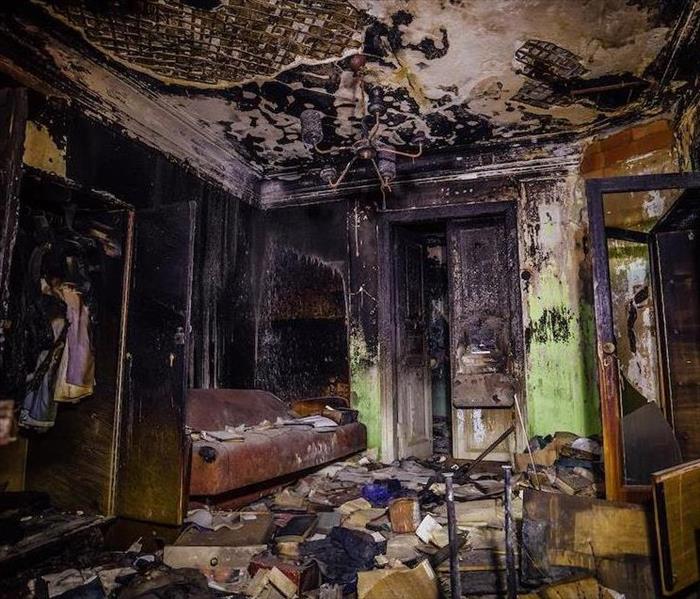Fire Damage Experts in Dallas Describe Chemicals Used for Cleaning Soot
6/21/2018 (Permalink)
 Seeing your home after fire damage can be overwhelming. Contact SERVPRO for an assessment and effective remediation services.
Seeing your home after fire damage can be overwhelming. Contact SERVPRO for an assessment and effective remediation services.
SERVPRO Technicians Evaluate Fire Damage to Determine the Appropriate Method to Clean the Soot in Your Home
Whenever a fire starts inside your house in Dallas, whether it is big or small, smoke can cause many problems. When a fire burns, not everything burnt in the blaze completely combusts. Partially combusted fuels get released into the air in the form of smoke. Smoke can travel throughout any structure and leave behind foul odors and soot residues.
If building materials and contents get covered in soot, the soils can ruin their surfaces. When mitigating fire damage in Dallas, the removal of soot residues is essential. Depending on several factors residues can be easy or difficult to remove.
Since the composition of soot can vary, our SERVPRO technicians utilize a variety of cleaning methods and chemicals during the cleaning process. Surfaces that are porous are best cleaned with dry soot removal methods. If wet chemicals are used on porous substances, then the soot can soak into the item causing more damage. Non-porous surfaces can be cleaned using wet chemicals and techniques because water will not soak the soils into material.
For most surfaces, our SERVPRO technicians can use a low-alkaline general surface cleaner. For areas affected with thick or greasy residues a heavy duty, high alkaline cleaner can be used. Some surfaces should be cleaned with chemicals that are specifically made for them.
For any glass surface, a specialized glass cleaner often gets utilized. Glass cleaners are slightly alkaline and contain ammonia. For wood surfaces, a wood creme cleaner can be effective. Wood cremes slightly polish wooden surfaces and can aid in deodorization.
Liquid creme cleaners work in the same way as wood cremes, and they can be used to clean grease and polish surfaces. Liquid cremes cannot be used on surfaces that are harmed by mild abrasives such as porcelain or enamel. Strong acid cleaners can be used to remove smoke and soot damage from stone and brick. Oxidizing cleaners are sometimes used when cleaning water-based organic stains and can help with deodorization.
Using the right product on the correct surfaces is essential to effectively clean problems with soot. In many cases, multiple types of methods are used until the most efficient technique is discovered. Any time you need help with smoke-related issues, call SERVPRO of Southeast Dallas County at (972) 227-0800 24 hours a day.
Click here for more information on the city of Dallas.






 24/7 Emergency Service
24/7 Emergency Service